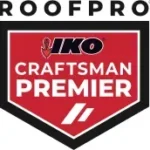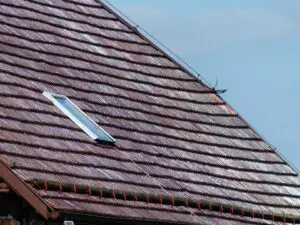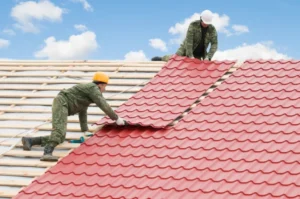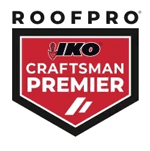Your roof plays a crucial role in your home’s energy efficiency. An outdated or poorly insulated roof can drive up your heating and cooling costs, while an energy efficient roofing system helps reduce energy consumption, lower utility bills, and improve indoor comfort. Whether you’re a homeowner looking to cut costs or a business owner aiming for sustainability, investing in the right roofing materials and technology can make a significant difference.
In this guide, we’ll explore how energy-efficient roofing works, the best materials for savings, and why it’s a smart investment for your home or business.
How Energy-Efficient Roofing Works
Reduces Heat Absorption
Traditional roofs absorb and trap heat, making your home warmer in the summer. Energy-efficient roofing materials are designed to reflect sunlight and reduce heat buildup, helping to maintain a cooler indoor temperature without overworking your air conditioning system.
Improves Insulation & Ventilation
A well-insulated roof prevents heat from escaping in winter and keeps cool air in during summer. Proper ventilation also ensures that warm air doesn’t get trapped in your attic, reducing the risk of moisture buildup, mold, and higher energy costs.
Lowers Utility Bills
By keeping your home cooler in the summer and warmer in the winter, an energy-efficient roofing system reduces the strain on your HVAC system, leading to lower electricity and heating costs year-round. A reliable roofing company nearby can assess your home’s needs and recommend the best solutions to maximize your energy savings.
Best Energy-Efficient Roofing Materials
Cool Roof Shingles
Cool roof shingles use reflective granules to reduce heat absorption and lower surface temperatures. They look similar to traditional asphalt shingles but offer better energy efficiency.
Pros:
- Affordable and widely available
- Reduces indoor temperatures in hot climates
- Available in various colors and styles
Cons:
- Shorter lifespan compared to premium materials
- May still absorb some heat in extremely hot regions
Metal Roofing
Metal roofs are naturally reflective and can be coated with cool roof finishes to enhance energy efficiency. They provide excellent insulation, durability, and weather resistance.
Pros:
- Can reduce cooling costs by 20-40%
- Extremely durable (40-70+ years lifespan)
- Fire-resistant and low maintenance
Cons:
- Higher initial cost than asphalt shingles
- Can be noisy in heavy rain if not properly insulated
Clay & Concrete Tiles
Clay and concrete tiles are great for hot climates as they naturally reflect heat and offer excellent ventilation. Their thermal properties help regulate indoor temperatures year-round.
Pros:
- Long lifespan (50-100 years)
- Resistant to extreme weather and fire
- Naturally cooling properties reduce energy use
Cons:
- Heavy, requiring a strong structural foundation
- Higher upfront cost compared to asphalt shingles
Green (Living) Roofs
Green roofs feature plants and vegetation, which act as natural insulators, keeping buildings cool in summer and warm in winter. They also help reduce urban heat island effects.
Pros:
- Provides excellent insulation and energy savings
- Absorbs rainwater, reducing drainage issues
- Eco-friendly and aesthetically appealing
Cons:
- Requires regular maintenance and irrigation
- Higher initial installation cost
Solar Roofing (Solar Shingles & Panels)
Solar roofing uses integrated solar panels or solar shingles to generate electricity, reducing dependency on the grid and lowering energy bills significantly.
Pros:
- Can produce clean, renewable energy
- May qualify for tax incentives and rebates
- Modern solar shingles blend with traditional roofing materials
Cons:
- High upfront installation costs
- Works best in sunny regions with high energy consumption
Additional Ways to Improve Roof Energy Efficiency
Upgrade Your Roof Insulation
Proper insulation prevents heat loss in winter and keeps your home cool in summer. High-quality insulation materials like spray foam or rigid foam boards can boost your home’s energy performance.
Improve Roof Ventilation
Good ventilation prevents heat and moisture buildup, which can lead to higher energy costs and roof deterioration. Installing ridge vents, soffit vents, or attic fans can help maintain a balanced temperature in your attic.
Choose a Reflective Roof Coating
Reflective roof coatings enhance energy efficiency by increasing a roof’s ability to reflect sunlight. This simple upgrade can lower surface temperatures by up to 50°F, reducing indoor cooling needs.
Use Light-Colored Roofing Materials
Darker roofs absorb more heat, making your home warmer in the summer. Choosing light-colored shingles, metal, or tiles helps reflect sunlight and keeps your roof cooler.
Cost vs. Savings: Is Energy-Efficient Roofing Worth It?
While energy-efficient roofing materials may cost more upfront, they offer long-term savings on utility bills, repairs, and maintenance. Here’s how different roofing materials compare in terms of lifespan, cost, and energy savings:
| Roofing Material | Lifespan | Estimated Energy Savings | Upfront Cost |
|---|---|---|---|
| Cool Roof Shingles | 20-30 years | 10-15% reduction in cooling costs | $3-$6 per sq. ft. |
| Metal Roofing | 40-70 years | 20-40% reduction in cooling costs | $5-$15 per sq. ft. |
| Clay & Concrete Tiles | 50-100 years | 15-30% cooling savings | $10-$20 per sq. ft. |
| Green Roof (Living Roof) | 40-50 years | 25-50% reduction in energy use | $15-$30 per sq. ft. |
| Solar Roofing | 25-40 years | Significant reduction (solar power generation) | $20-$40 per sq. ft. |
Over time, energy-efficient roofing pays for itself through lower utility bills, fewer repairs, and increased property value. If you’re searching for a roofing company nearby to help you upgrade to an energy-efficient roof, working with experienced professionals ensures you get the best materials and installation quality.





